The word "mulch" has fallen into common and nearly exclusive use as the descriptive name for shredded wood or bark products; the truth is that mulch is an umbrella term for any product — organic or inorganic — that serves as a topdressing for soil.
A 2- to 4-inch layer of mulch throughout your planting beds will help conserve soil moisture, stabilize soil temperatures, reduce soil erosion, reduce soil compaction and prevent weed growth. Mulch also contributes to the design of a landscape by echoing color choices, regional influences and artistic statements.
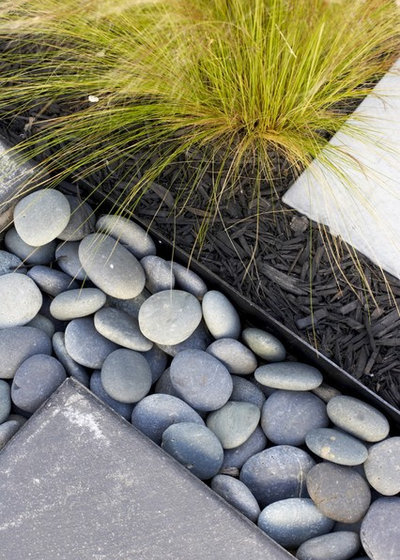
Jeffrey Gordon Smith Landscape Architecture
There are two categories of mulch:
organic and
inorganic. They may be used exclusively or in combination, with or without an underlayment of landscape fabric. Landscape fabric will help keep weeds at bay and prevent inorganic mulch from sinking into the soil. Landscape fabric, however, is not effective in densely planted areas.
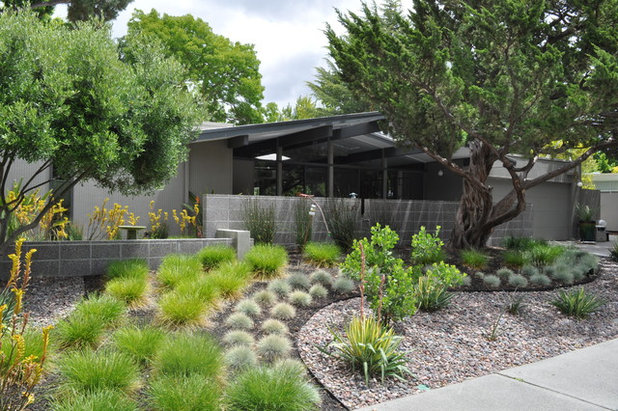
Huettl Landscape Architecture
Organic MulchOrganic mulches are typically wood products: materials such as pine needles or bark, shredded cedar, aspen chips, arborists' tree trimmings or even recycled Christmas trees. However, compost, grass clippings, nut hulls, ground corn cobs ...
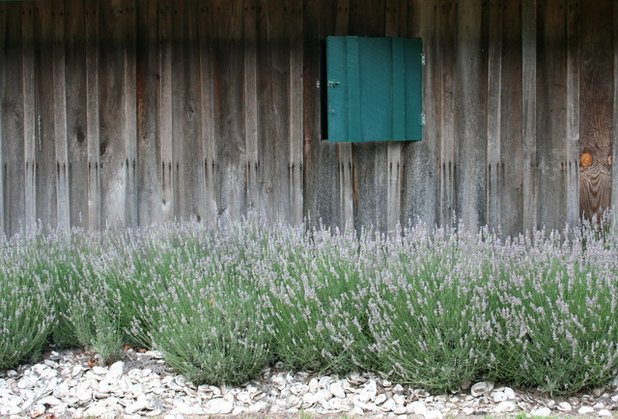
Gardening with Confidence®
... and even seashells are ideal for this purpose.
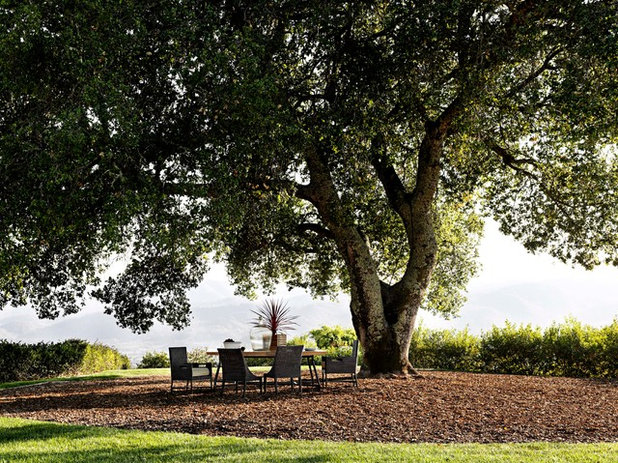
McGuire Furniture Company
Advantages of organic mulches: - Highly permeable, allowing air and moisture to reach the plants' root zone. As they decompose, they contribute nutrients to both soil organisms and plants. Organic mulch won't hold or radiate heat, making it a good choice for urban areas.
- Most are lightweight and easy for homeowners to work with.
Disadvantages of organic mulches:- They are not permanent and will need to be replaced over time.
- They may harbor insect pests.
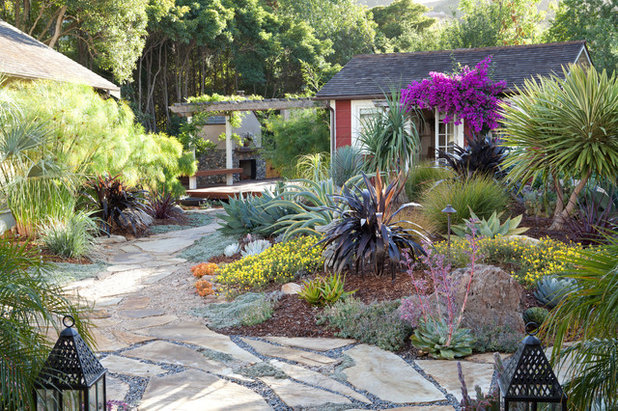
Gardens by Gabriel, Inc.
Cost and considerations:- Organic mulches are often the by-product of local agricultural industries and may be quite economical — even free.
- Due to their light weight, organic mulches are less expensive to transport and install than inorganic mulches.
- A cubic yard of organic mulch will cover about 100 square feet to a 3-inch depth.
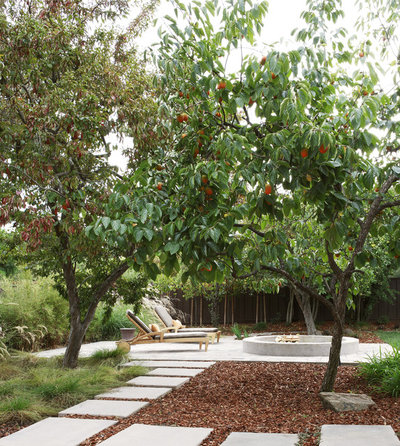
Arterra Landscape Architects
Design considerations. Organic mulches have a soft, rustic appearance that can enhance an informal design or add a nice stroke of contrast to formal or modernist elements.
Maintenance. Organic mulches will decompose, may blow off in heavy winds and can shift in heavy rains. They will need to be tidied up from time to time and replenished every year or two to maintain a 2-inch deep layer. Hand pull or spot spray weeds as needed.
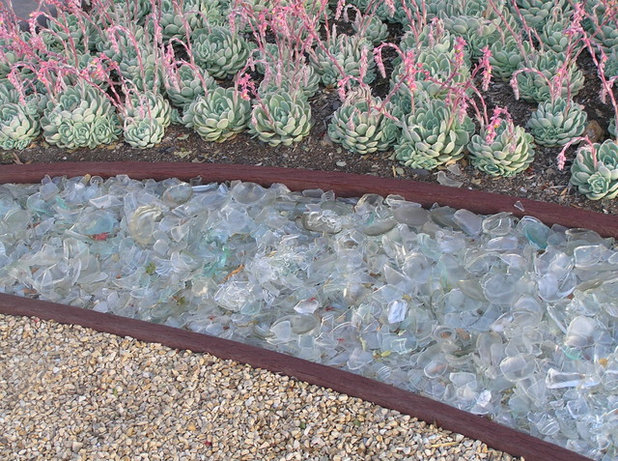
Charles McClure - Professional Site Planning
Inorganic MulchInorganic mulches include all of the many rock products — from decomposed granite or crusher fines to cobblestones and riprap. Recycled materials like glass, rubber (tires) and crushed concrete also fall into this category. Think local when you're sourcing products for your landscape.
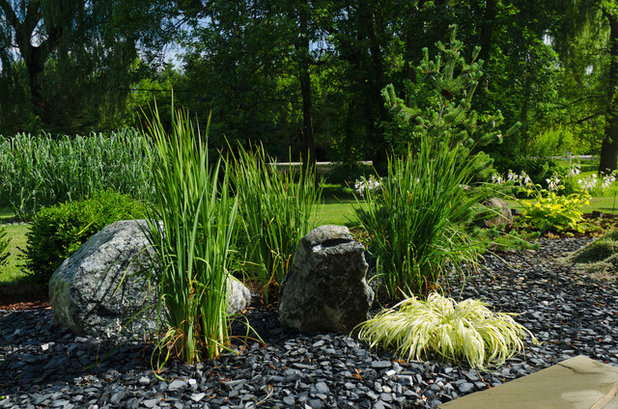
Ginkgo Leaf Studio
Advantages of inorganic mulches:- Highly stable and should be considered a permanent part of your landscape.
- One of river rock or crushed stone is ideal in areas where high winds or forest fires are a threat.
- A wide variation in color, texture and size makes them very adaptable for creative landscape designs.
Disadvantages of inorganic mulches: - Most absorb and radiate heat, warming the living environment for both you and your plants.
Cost and considerations: - A locally sourced product will be easier on your budget than those imported from another region.
- A ton of 1 1/2-inch rock will cover 55 square feet to a 3-inch depth.
- Rock products in particular are very heavy and can require special equipment and professional installation help.
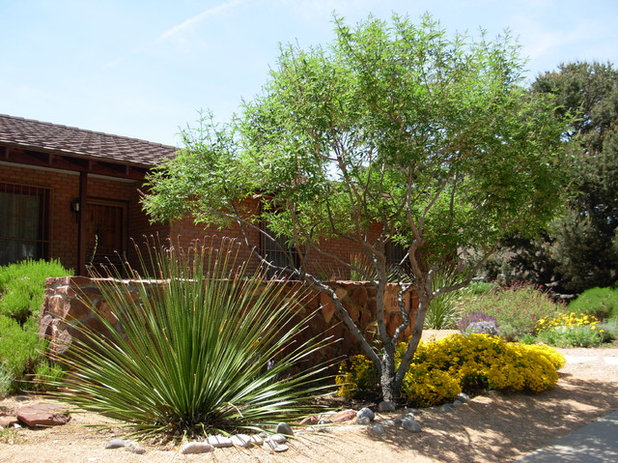
QUERCUS
Design considerations. In many regions inorganic mulch mimics the natural environment, making it an ecofriendly choice for use with native plants.

Inorganic mulch can also be used creatively in high-impact design concepts such as these colorfully bold stripes of recycled glass and ice plant (
Delosperma sp), or the sophisticated tone-on-tone textural play below.
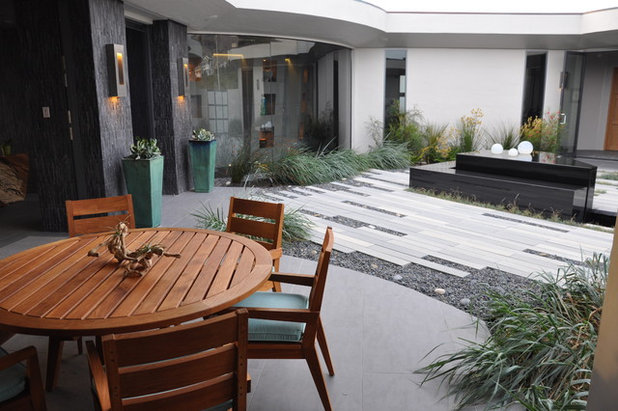
Jeffrey Gordon Smith Landscape Architecture
Maintenance. Use a blower every week or two to clear debris from your inorganic mulch. Hand pull or spot spray weeds as needed.
Tell us: How do you use mulch in your garden?





